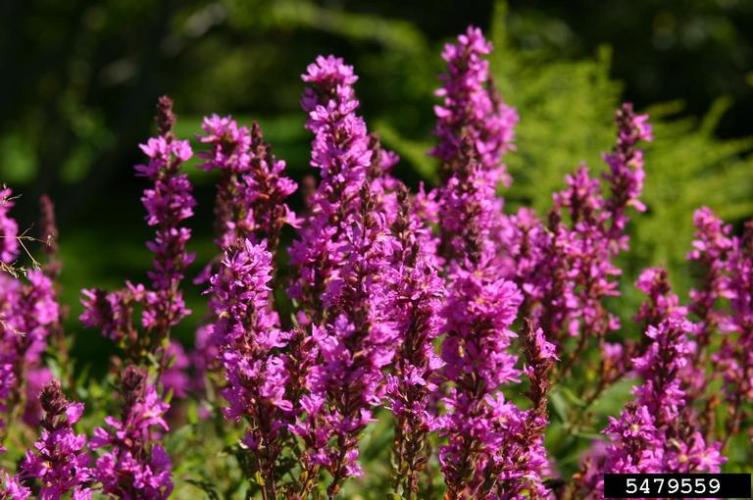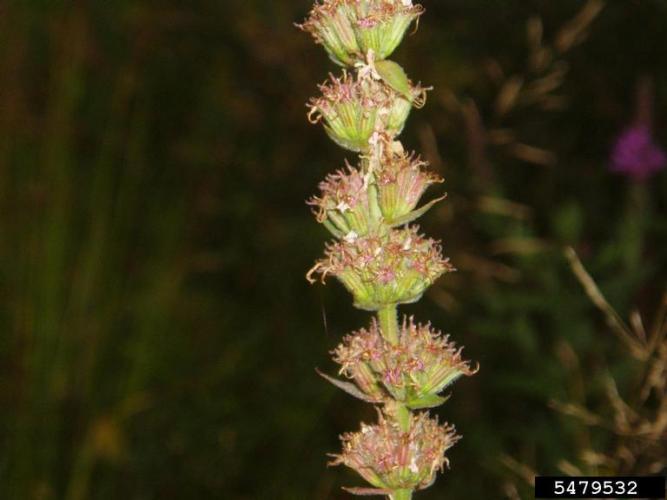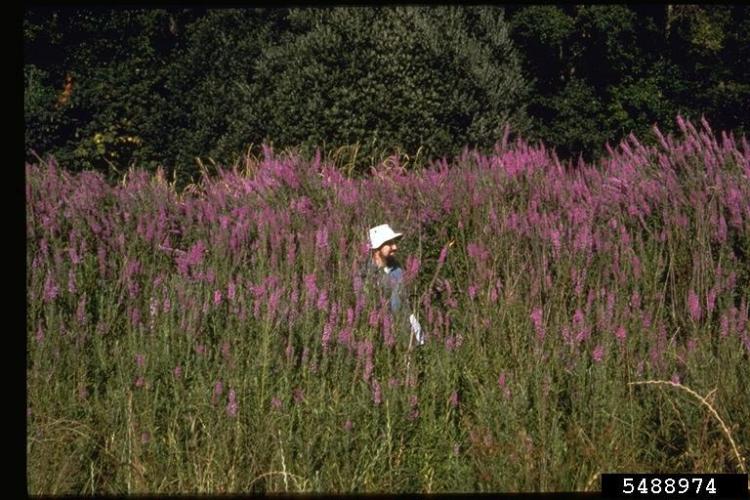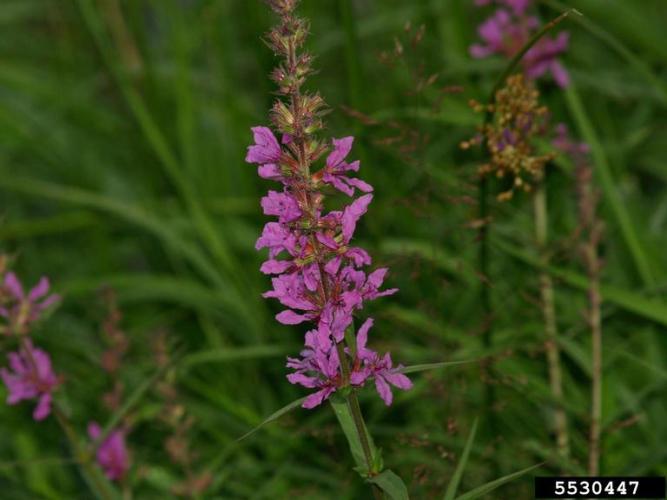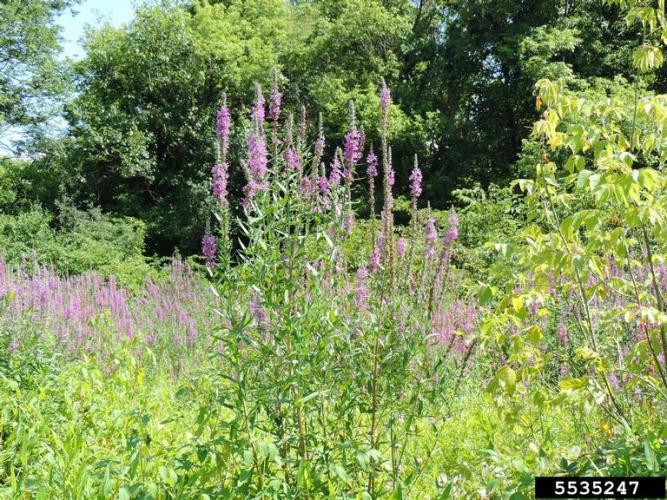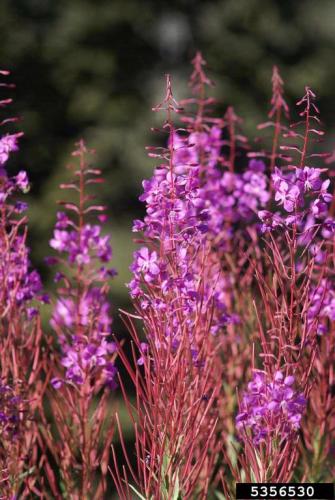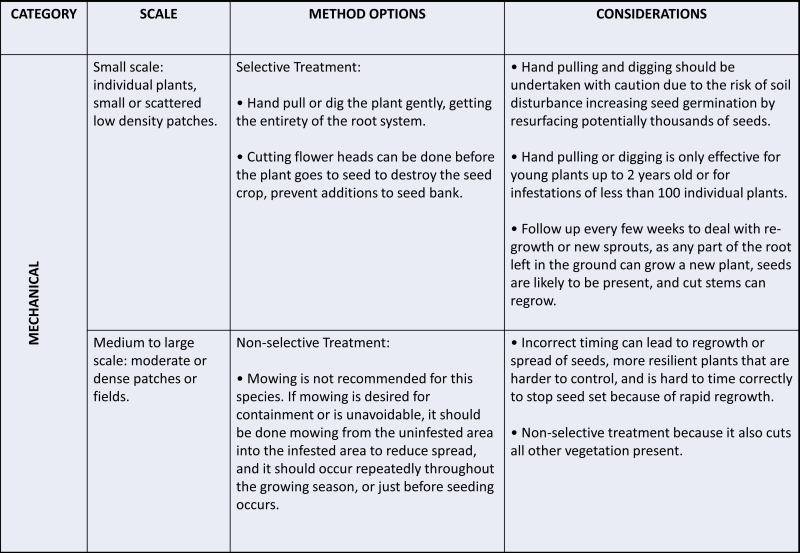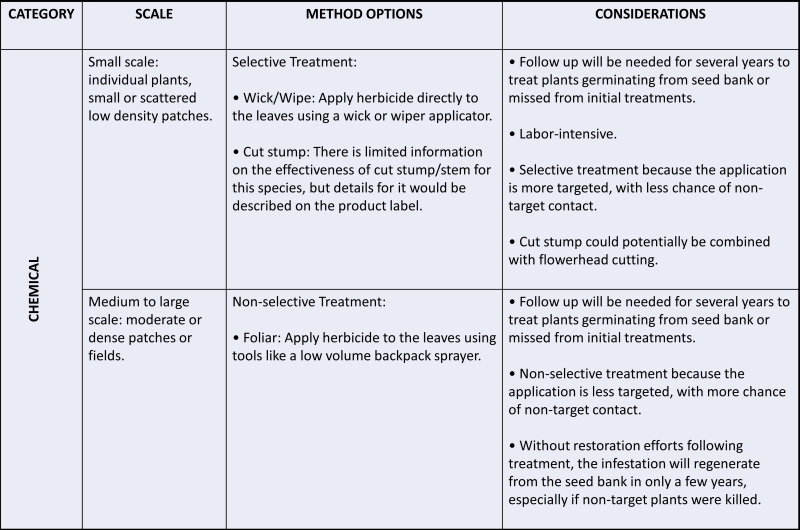Loosestrife, Purple
Identification
Appearance
Lythrum salicaria is a tall, multistemmed (30-50 per plant), perennial forb that can grow up to 5 feet in height.
Foliage
The opposite or whorled leaves are dark-green, lance-shaped, sessile, 1.5-4 inches long and round or heart-shaped at the base.
Flowers
Flowering occurs in July to October, when pink to purplish flowers develop in 4-16 inch long spikes at the tops of the stems. Flowers have 5-7 petals and twice as many stamens as petals.
Fruit
Fruits are capsules that are enclosed in the hairy sepals and contain several reddish brown seeds.
Biology
Origin
Purple loosestrife is native to Europe and Asia. It was first introduced into North America in the early 1800s for ornamental and medicinal purposes.
Habitat
Purple loosestrife grows in a variety of wet habitats, including wet meadows, marshes, river banks, and the edges of ponds and reservoirs. It tolerates a wide variety of moisture, nutrient, and pH conditions.
Threat
Purple loosestrife can quickly form dense stands that completely dominate the area excluding native vegetation. This plant can spread very rapidly due to its prolific seed production; each plant can produce up to 2.5 million seeds per year. It can also hybridize with native loosestrife species, potentially depleting the native species gene pool.
Loosestrife invades both natural and disturbed wetlands and alters their ecological structure and function.
Life Cycle
This aggressive plant spreads both vegetatively and by abundant seed dispersal.
With an extended flowering season, and an unusually high number of flowering stems, each purple loosestrife plant is capable of producing two to three million seeds per year. Research has shown that cultivars, advertised as sterile, are capable of producing viable seed. This plant can also reproduce vegetatively by underground stems at a rate of one foot per year.
Vermont Distribution
Citations
photo credit
Purple loosestrife1, 5535247, Richard Gardner, UMES, Bugwood.org
Purple loosestrife2, 5479559, Leslie J. Mehrhoff, University of Connecticut, Bugwood.org
Flower, 5530447, Becca MacDonald, Sault College, Bugwood.org
Fruit, 5479532, Leslie J. Mehrhoff, University of Connecticut, Bugwood.org
Infestation, 5488974, Eric Coombs, Oregon Department of Agriculture, Bugwood.org
Narrow-leaved fireweed, 5356530, Terry L Spivey, Terry Spivey Photography, Bugwood.org
information credit
Adirondak Park Invasive Plant Program
Center for Invasive Species and Ecosystem Health
Pennsylvania Department of Conservation and Natural Resources
Ontario Invasive Plant Council Best Management Practices for Purple Loosestrife
PennState Extension Resource on Purple Loosestrife
Invasive Species Council of Metro Vancouver Factsheet on Purple Loosestrife
US Forest Service Fire Effects Information System Report on Purple Loosestrife
